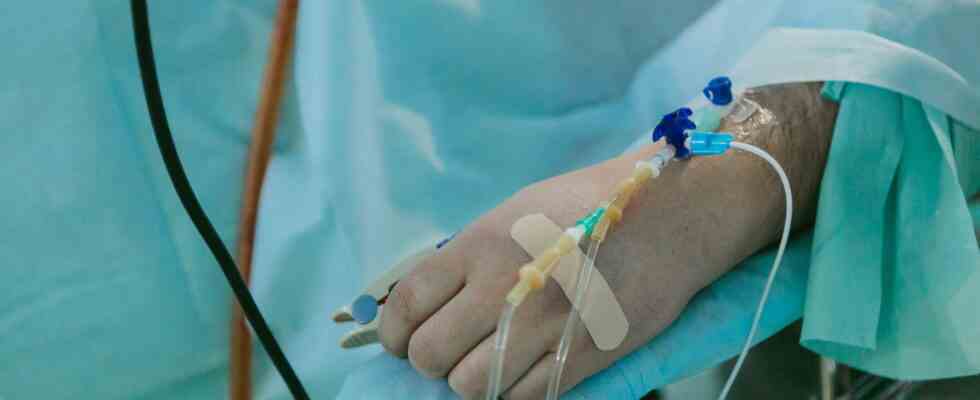Image: Unsplash
The article can only be displayed with activated JavaScript. Please enable JavaScript in your browser and reload the page.
An AI system for early detection of sepsis registers 82 percent of all diseases. It could soon save thousands of lives.
Sepsis is one of the most common diseases in the inpatient sector. Despite treatment, about 25 percent of patients with sepsis and 45 percent with severe sepsis die. Starting therapy as early as possible increases the chances of survival significantly.
Sepsis is caused by infectious diseases that get out of control. In Germany, more than 75,000 people die from sepsis every year. According to studies, 15,000 to 20,000 are avoidable. This makes sepsis the third leading cause of death in Germany behind cardiovascular diseases and cancer.
Sepsis is also a common cause of death in other countries. In the United States, approximately 1.7 million adults develop sepsis each year. More than 250,000 of them die.
The World Health Organization classified sepsis as a global threat in 2017 and estimated that 49 million people died from sepsis and 11 million died in the same year – about 20 percent of annual global deaths.
Early detection of sepsis is a matter of life and death
The time at which sepsis is detected determines the course of the disease. The earlier sepsis is detected, the higher the chances of recovery. However, early symptoms such as fever or confusion are similar to those of other diseases and are sometimes overlooked.
Researchers at Johns Hopkins University have therefore AI early warning system for sepsis developed, which analyzes the medical history of patients with current symptoms and laboratory results together and thus determines whether there is a risk of sepsis. The AI system also suggests treatment protocols, such as the use of antibiotics.
The “Targeted Real-Time Early Warning System” (TREWS) also tracks patients from their arrival at the hospital to their discharge and is intended to ensure that no important information is overlooked – even with changing staff or a transfer.
Bayesian Health, a company spun off from Johns Hopkins University in 2016, led the rollout of the system to all clinics. In several studies by Johns Hopkins University, more than 4,000 medical professionals from five hospitals used the AI system to treat 590,000 patients. The researchers also tested TREWS’ diagnostic ability with 173,931 previous cases.
The TREWS AI system clearly beats older systems
According to the study, 38 percent of all alerts from TREWS were actual cases of sepsis. Overall, the AI system recognized 82 percent of all cases of sepsis during the study period.
“This is a breakthrough in many ways,” said co-author Albert Wu, internist and director of the Johns Hopkins Center for Health Services and Outcomes Research. “Until now, most systems of this type have been wrong far more often than they have been right.”
Other electronic tools for sepsis detection only register up to 33 percent of all sepsis cases. In addition, the actual cases of sepsis account for only two to five percent of the total number of all warnings from such systems. “These false positives undermine trust,” Wu said.
Alerts from TREWS, which were responded to within three hours, led to antibiotic treatment almost two hours earlier on average, the authors write. In this group, this led to lower hospital mortality, fewer organ failures and a shorter length of stay.
TREWS is supposed to save thousands of people
“It’s the first use of AI at the bedside, used by thousands of providers and proven to save lives,” said Suchi Saria, founding director of the Malone Center for Engineering in Healthcare at Johns Hopkins University and lead author of the studies. She expects TREWS and similar systems to save the lives of thousands of people affected by sepsis every year.
Saria and her colleagues want to expand TREWS to other risks in addition to sepsis in the future. The team has already adapted the technology to identify patients at risk for pressure injuries, sudden worsening from bleeding, acute respiratory failure and cardiac arrest.
TREWS is fundamentally different from older diagnostic systems without AI support. “It is adaptable and takes into account the diversity of patient populations, the unique ways in which physicians and nurses deliver care in different locations, and the unique characteristics of each healthcare system, making it significantly more accurate and gaining the trust and acceptance of providers.” , says Sarah.
Note: Links to online shops in articles can be so-called affiliate links. If you buy via this link, MIXED.de will receive a commission from the seller. The price does not change for you.

